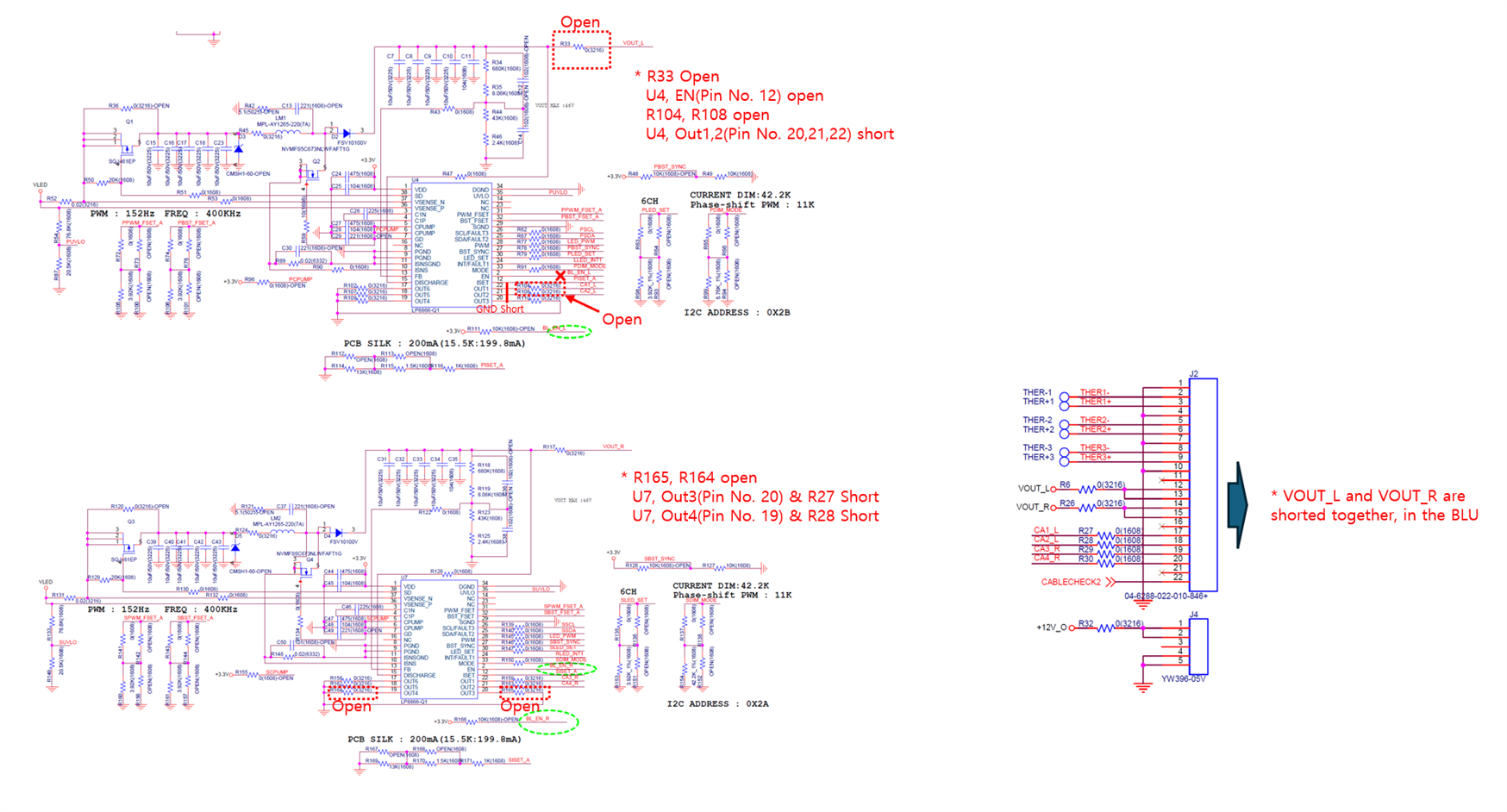Tool/software:
About 4 months ago, I inquired regarding driving LEDs using two LP8866-Q1 ICs.
-
Connection method:
-
LED configuration: Anode 1 and 2, Cathode 1, 2, 3, 4, and Anode 1 and 2 are shorted together.
-
LP8866-Q1 #1 drives Anode 1, Cathode 1 and 2.
-
LP8866-Q1 #2 drives Anode 2, Cathode 3 and 4.
This is how it is driven (although it is not the recommended method).
Both ICs share the same 24V input power supply, and the total current measured on the 24V input equipment is about 600mA.
However, about 10% of the time, instead of 24V, a voltage around 0.6V is measured, and the current spikes to 1000mA to 3000mA.
Could this phenomenon be caused by shorting the two ICs’ Anodes together?
I would like to understand the mechanism behind this.
For reference, the EN pins are connected together and used simultaneously.
If the EN pins are separated and enabled with a time delay, would that improve the boost circuit error?



